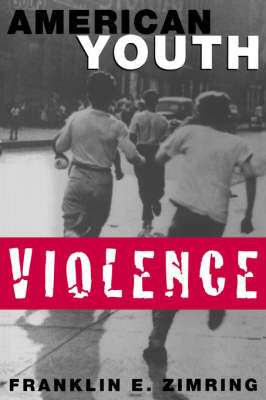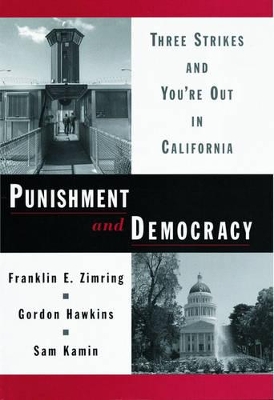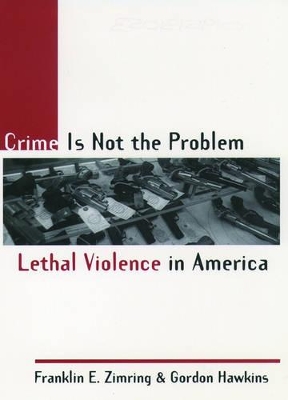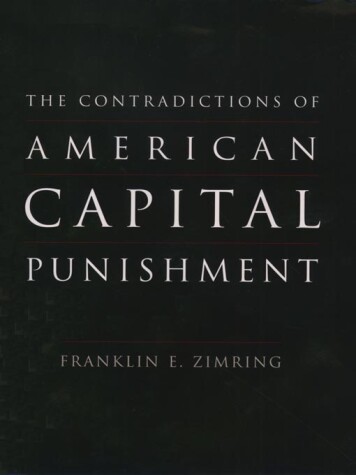Studies in Crime and Public Policy
7 total works
David T. Johnson, an expert on law and society in Asia, and Franklin E. Zimring, a senior authority on capital punishment, combine detailed case studies of the death penalty in Asian nations with cross-national comparisons to identify the critical factors for the future of Asian death penalty policy. The clear trend is away from reliance on state execution and many nations with death penalties in their criminal codes rarely use it. Only the hard-line authoritarian regimes of China, Vietnam, Singapore, and North Korea execute with any frequency, and when authoritarian states experience democratic reforms, the rate of executions drops sharply, as in Taiwan and South Korea. Debunking the myth of "Asian values," Johnson and Zimring demonstrate that politics, rather than culture or tradition, is the major obstacle to the end of executions. Carefully researched and full of valuable lessons, The Next Frontier is the authoritative resource on the death penalty in Asia for scholars, policymakers, and advocates around the world.
Punishment and Democracy
by Franklin E. Zimring, Gordon Hawkins, and Sam Kamin
Offering the most reliable data available, Zimring documents the decline as the longest and largest since World War II. It ranged across both violent and non-violent offenses, all regions, and every demographic. All Americans, whether they live in cities or suburbs, whether rich or poor, are safer today. Casting a critical and unerring eye on current explanations, this book demonstrates that both long-standing theories of crime prevention and recently generated theories fall far short of explaining the 1990s drop. A careful study of Canadian crime trends reveals that imprisonment and economic factors may not have played the role in the U.S. crime drop that many have suggested.
There was no magic bullet but instead a combination of factors working in concert rather than a single cause that produced the decline. Further--and happily for future progress-- it is clear that declines in the crime rate do not require fundamental social or structural changes. Smaller shifts in policy can make large differences.
The significant reductions in crime rates, especially in New York, where crime dropped twice the national average, suggests that there is room for other cities to repeat this astounding success. In this definitive look at the great American crime decline, Franklin E. Zimring finds no pat answers but evidence that even lower crime rates might be in store.
The one, sure way that imprisonment prevents crime is by restraining offenders from committing crimes while they are locked up. Called "incapacitation" by experts in criminology, this effect has become the dominant justification for imprisonment in the United States, where well over a million persons are currently in jails and prisons, and public figures who want to appear tough on crime periodically urge that we throw away the key. How useful is the modern prison in restraining crime, and at what cost? How much do we really know about incapacitation and its effectiveness? This book is the first comprehensive assessment of incapacitation. Franklin E. Zimring and Gordon Hawkins show the increasing reliance on restraint to justify imprisonment, analyze the existing theories on incapacitation's effects, assess the current empirical research, report a new study, and explore the links between what is known about incapacitation and what it tells us about our criminal justice policy. An insightful evaluation of a pressing policy issue, Incapacitation is a vital contribution to the current debates on our criminal justice system.
In Contradictions in American Capital Punishment, Frank Zimring reveals that the seemingly insoluble turmoil surrounding the death penalty reflects a deep and long-standing division in American values, a division that he predicts will soon bring about the end of capital punishment in our country. On the one hand, execution would seem to violate our nation's highest legal principles of fairness and due process. It sets us increasingly apart from our allies and indeed is regarded
by European nations as a barbaric and particularly egregious form of American exceptionalism. On the other hand, the death penalty represents a deeply held American belief in violent social justice that sees the hangman as an agent of local control and safeguard of community values. Zimring uncovers the most
troubling symptom of this attraction to vigilante justice in the lynch mob. He shows that the great majority of executions in recent decades have occurred in precisely those Southern states where lynchings were most common a hundred years ago. It is this legacy, Zimring suggests, that constitutes both the distinctive appeal of the death penalty in the United States and one of the most compelling reasons for abolishing it.
Impeccably researched and engagingly written, Contradictions in American Capital Punishment casts a clear new light on America's long and troubled embrace of the death penalty.






